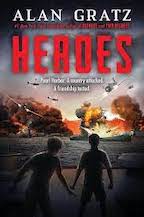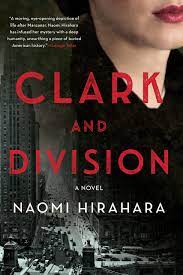Rated 5 stars ***** ARC. Scholastic Press (Scholastic). 219 p. (Includes “The Arsenal of Democracy” comic, “Author’s note,” “About the story,” “Asian Americans in Comics”, and “The Legacy of Pearl Harbor.”) To be published February 6, 2024).
Thirteen-year-old Frank and his best friend Stanley shared a love for comic books, where they lived on the Pearl Harbor base in Hawaii where their dads worked. Frank was the writer, while Stanley made the storyline come alive with amazing drawings. At his father’s last posting Frank had a bad experience, which made him afraid of everything. Before he could do anything, he spent minutes thinking of things that could go wrong and forgot how to live his life. Fear coated everything he did.
Everything was peaceful until the morning of December 7, 1941, when hundreds of Japanese planes attacked Pearl Harbor. The boys had been on the Utah, visiting his sister’s boyfriend Brooks, when the attack began. The Utah was hit, and they had to abandon ship, but Frank was petrified with fear. Brooks had to shake him out of it and helped him escape, then disappeared. When he was found dead Frank blamed himself.
As he and Stanley frantically tried to reunite with their families Frank realized his best friend was now seen as the enemy because his mother was Japanese. Though Stanley was born in the United States everyone only saw his face and didn’t care that he was Japanese American. With America now at war, if Frank wanted to keep their friendship in the strange new world which they were both now part of, he would have to grow a backbone and overcome his fear of being afraid of everything.
Middle school readers will learn not only about the Pearl Harbor attack but what it was like to be Japanese American during a time of anti-Japanese sentiment in Hawaii and the rest of the country. Alan Gratz does an excellent job with his research and end notes to help his young readers learn more about this troubled period of history.
Highly recommended for ages 12 and older.


 After Japan’s
After Japan’s  Alex was ten years old in 1935 when his teacher forced him to become pen pals with a girl named Charlie who lived in Paris, thousands of miles away from his American home on Bainbridge Island. Despite his initial horror at being paired with a girl their friendship deepened as, letter after letter, year after year, they shared their innermost thoughts.
Alex was ten years old in 1935 when his teacher forced him to become pen pals with a girl named Charlie who lived in Paris, thousands of miles away from his American home on Bainbridge Island. Despite his initial horror at being paired with a girl their friendship deepened as, letter after letter, year after year, they shared their innermost thoughts. Sixteen-year-old Josh had joined the Navy for revenge against the Japanese after his father was killed in the
Sixteen-year-old Josh had joined the Navy for revenge against the Japanese after his father was killed in the  In 1942, when George was almost 5 years old, his Japanese-American parents had their bank accounts frozen, and his father lost his business. Ordered out of their Los Angeles home with only what they could carry, they were forced to live in several different internment camps for four years. What was their crime? Their “crime” was that they were of Japanese ancestry and, thus,
In 1942, when George was almost 5 years old, his Japanese-American parents had their bank accounts frozen, and his father lost his business. Ordered out of their Los Angeles home with only what they could carry, they were forced to live in several different internment camps for four years. What was their crime? Their “crime” was that they were of Japanese ancestry and, thus,  I, along with thousands of other librarians, had the privilege of hearing
I, along with thousands of other librarians, had the privilege of hearing